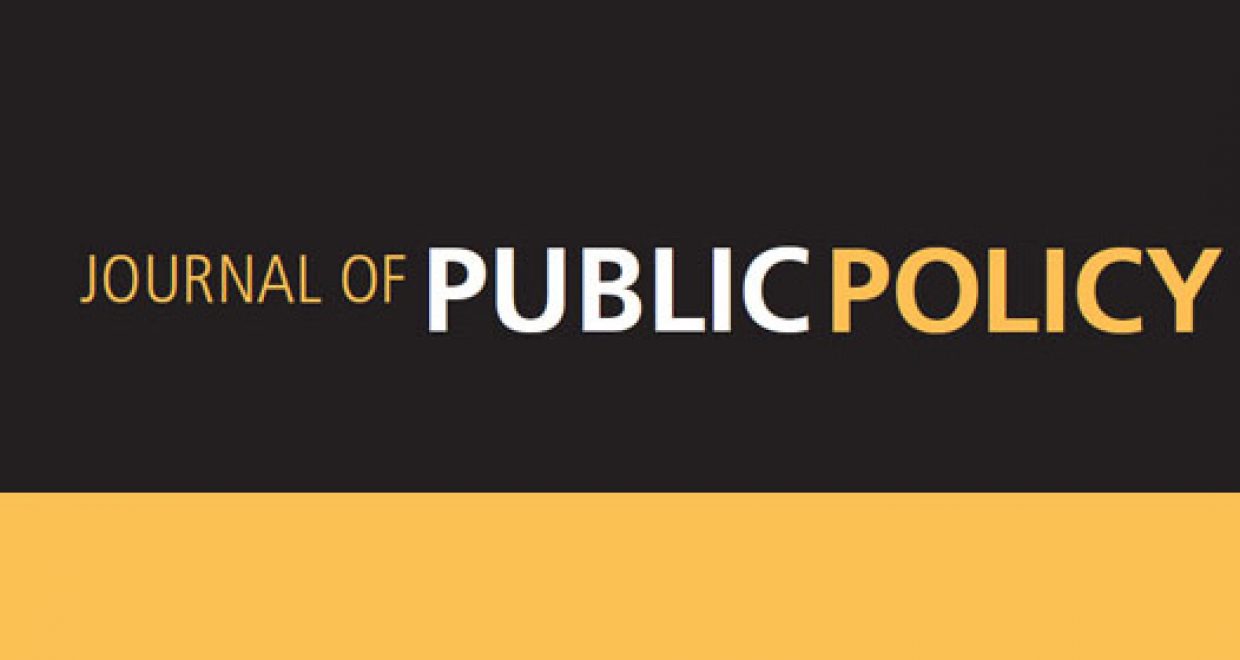The dynamics of policy change in authoritarian countries
In democratic countries, actors inside and outside the state have various channels for expressing their concerns and influencing policy agendas. In contrast, in authoritarian countries, less inclusive institutions lead to different dynamics of policy change. Recent studies on policy change in authoritarian regimes suggest that due to the absence of elections and citizen participation, decision-making elites often ignore information from society, which leads to extended policy inertia, and policy change does not occur until policy conflict and pressure cumulate to dangerous levels.
Then how does policy change occur in an authoritarian setting? How are conflicts and pressure built up under authoritarian systems? And in which way do decision makers respond to these signals? Recent research by Yipin Wu in the Journal of Public Policy (JPP) responds to these questions by conducting a multiple-case study of policy change in China.
This study traces the change processes of four policy cases. The four cases are (a) the creation of the New Rural Cooperative Medical System; (b) the reform of the Urban Demolition Regulation; (c) the reform of the Dairy Product Safety Standard; and (d) and the reform of the Environmental Protection Law. These are all national policies. However, the processes of policy change vary widely. For instance, it took eighteen years for the rural health reform to reach the governmental agenda and less than one year for the new Dairy Product Safety Standard. This study poses two important questions to understand the dynamics of policy change in China, which are: why some policy changes proceeded quickly whereas others were delayed, and what factors cause variations.
First, this research finds that media reports on focusing events played pivotal role in increasing issue salience and mobilizing social pressure for change. The victims of the melamine scandal, forced urban demolition and air pollution intensified their voices by winning public support across the country via media reports and online discussions. Once decision makers identified the signals of public discontent and the risk of inaction, a decision to change the current policy was set on the policy agenda. When an issue, however, attracted little interest from the media and the public, such as a rural health issue, it remained invisible for long time. In this scenario, only the intervention of leading officials can bring the issue to decision makers. This finding suggests that public participation exists in contemporary China and that its influence in policy making is increasingly important. Nevertheless, due to the lack of effective institutionalized information input channels, informational inefficiency still restrains the system from recognizing and responding to problems promptly. As a consequence, problems such as air pollution and low health insurance coverage remained as “hidden issues” for a long time.
Second, in addition to informational inefficiency, resistance of established interest is the other important factor that blocks policy change. Policy change involves the shift of policy priorities and the reallocation of various resources. Thus, a policy change could hurt the interests of those who have already benefited from the existing policy and favor others. The interests and preferences of actors involved in the policy change process diverge and even conflict with each other. In response, the dominant groups in the policy community would mobilize to resist change that is detrimental to their interests. In an authoritarian system, unlike the pro-change groups, which excessively rely on informal venues, established interests are state actors or other stakeholders, such as local governments, real estate industries, and state-owned industries, which gain direct institutional access to influence policy processes. Buttressed by institutions, they are more capable of mobilizing into stable and persistent resistance to change. Only continuously accumulated public discontent and pressure are able to overcome it. The political system shapes the gap of political capacities and access channels between established interests and the actors outside the state.
The authoritarian institutional arrangement shapes the capacities of two key forces in the conflict. Policy change is most likely to occur when the information signal from the external world is extraordinarily strong, and the established interest is either fragmented or absent. It is more difficult for policy change to occur when the established interest is the state itself, and the facilitating force is politically weak.
Accordingly, the power distribution of pro-change groups and the established interest is critical to policy change and the development of the conflict influence the process and outcome of policy change. When the conflict expands with the participation of actors such as the media or public and leading officials, policy stability is disrupted. However, if the pro-change force is unable to overcome the resistance of the established interest, policy change is delayed or blocked.
This study extends the applicability of theories of conflict expansion and government information processing to authoritarian countries. From the micro-level, this study demonstrates the process of pressure building up and information inputs and processing in authoritarian settings. This study suggests that similar to observations of other authoritarian regimes, China’s information input channels remain limited and not always effective. Therefore, under-response and delay are exacerbated, and radical change occurs when problems grow severe, and the pressure for change destabilizes the regime.
– Yipin Wu
You can read the author’s new JPP article free of charge until the end of January 2019.





